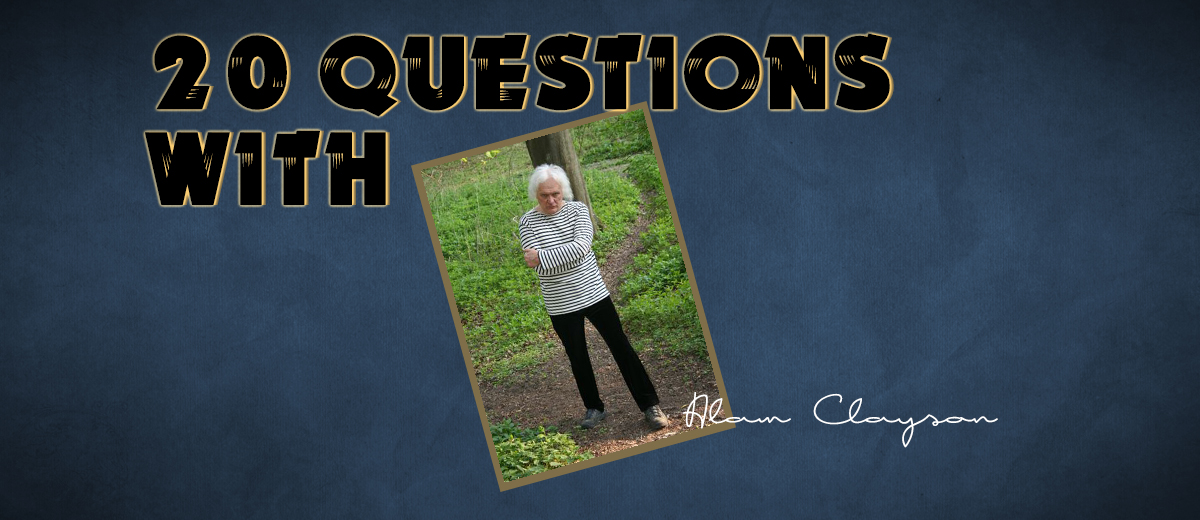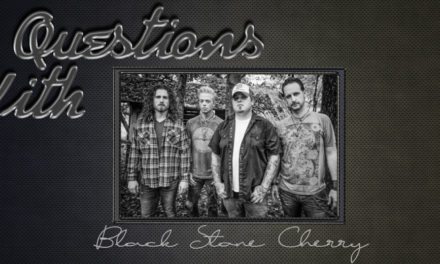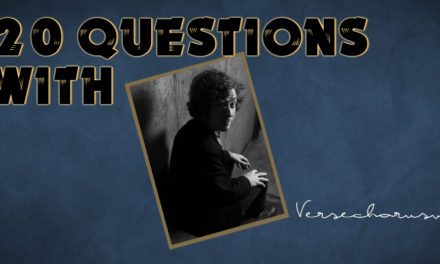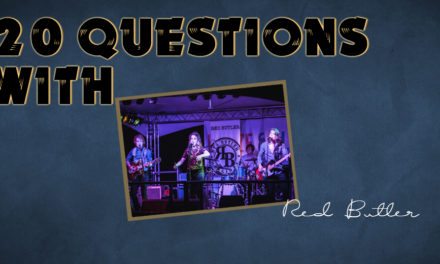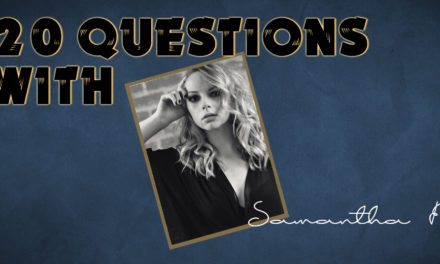Alan Clayson – 20 Questions
He’s a writer, a music historian, a champion of Chanson and its derivatives, a musician, a composer and vocalist. He fronts Clayson & The Argonauts. All his books on the Stones, Beatles, Brel and much more are worth finding. Ever since our Pete saw Alan play a show at The Eel Pie Club with Pretty Thing Dick Taylor in his band, he has followed his career, had him as a guest on a radio show, MC’d the odd Clayson performance and counted Alan as a friend and fellow crusader for quality artists. Here Mr Clayson provides illuminating responses to one of our customised question sets…
- Suggest two or three great drum intros to songs or instrumentals (any genre)
‘Glad All Over’ (1963 single) and ‘Bits And Pieces’ (1964 single) by The Dave Clark Five. On the latter, there’s a slight hesitancy – and, as a result, there are seven-and-a half rather than eight stamps. Yet drummers have since commented on how clever it was – as though it had been deliberate. In parenthesis, I was most flattered to be listed among ‘famous fans’ on a Five web-site (www.dc5bitsandpieces.com).
- A favourite bass line on a dance recording? And why?
‘Dance To The Music’ by Sly and The Family Stone (1968 single), attractive for the defiant audacity of thrumming the same notes over and over again.
- Name a great recording including in the title 1/ Red 2/ White 3/ Blue
In 1937, modern classical composer Edgard Varèse was purported to be collaborating with novelist André Malraux, whose latest effort was centred on the Spanish Civil War. Excited news-gatherers named it ‘the Red Symphony’. It was to involve sections of the orchestra and chorus wired to amplifiers in different parts of the auditorium so, Edgard explained, ‘the music will at times hit the hearer on the back of the neck’. The project was abandoned – but I’d have liked to have been at the performance had it been finished (and if I’d been alive then).
In 1972, I was served by proprietor Malcolm McLaren, awaiting his destiny as The Sex Pistols’ svengali, in Let It Rock – which specialised as much in Teddy Boy garments as antique music – towards the wrong end of King’s Road, Chelsea. There, a more regular patron was bragging of possessing a 1959 acetate of The Big Bopper’s ‘White Lightning’. When challenged for proof of ownership, his response – considered perfectly acceptable by McLaren – was to snarl that no-one gets to even look at it, let alone hear it.
On the same wavelength – even the same station – as any Jacques Brel chanson was ‘Montague Terrace In Blue’ on Scott Walker’s maiden solo album (1968). Scott was to escape from his particular ruling passion to pursue a style that would almost-but-not-quite rebuff any easy comparison to Brel.
- Name a TV series where the theme music was better than the actual shows and do you know who created or recorded it?
‘Fireball XL5’ by Don Spencer (1963 single) from the TV puppet series of the same name. It seems to feature the first – and possibly only – employment of a crumhorn on a UK Top Forty entry. Commercially, it eclipsed a scintillating instrumental version by The Flee-Rekkers.
- A recording that makes you laugh ….intentionally or otherwise!
‘The Troggs Tape’ (1981 limited-edition single) is the group’s best-remembered – and most inadvertent – artistic statement from the early 1970s.
- Name an album or a couple of albums where the cover or artwork could have been better, in your humble opinion….give any thoughts around this
The front of Blue Jeans A’ Swinging by The Swinging Blue Jeans (1964) is dominated by four items of denim hosiery dangling on a washing line. Nevertheless, seven years later no less than Andy Warhol designed something similar for The Rolling Stones’ Sticky Fingers LP.
- Best rock’n’roll swagger recording NOT by the Rolling Stones
‘Shakin’ All Over’ by Johnny Kidd and the Pirates (1960 single) melting into Them’s ‘Gloria’ (1964 B-side) is a part-piece of mine whenever I find myself microphone in hand in an ‘impromptu’ musical situation. One of its attractions is the opportunity to elongate the talking bit in ‘Gloria’, beginning it with ‘She takes a time machine to my century…she flies a flying saucer to my galaxy…she boards a rocket to my solar system…’, you get the drift.
- When asked about Clayson and the Argonauts, I venture that the band had all the instrumental trappings of a contemporary prog rock group, but absolutely none of the pretence or faux grandeur….is this about right ? And what would you add re the group’s work?
Our most consistent instrumental line-up is the same as The Dave Clark Five’s (guitar-bass-drums-keyboards-saxophone), but it lends itself to a form of what you describe as ‘prog-rock’ peculiar to ourselves in which the principal focus is the song rather than the use of it as an avenue for trundling ‘craftsmanship’, ‘funky’ intensity and the heads-down cleverness that had disenfranchised me from acceptance as a credible musician when I was at college in the early 1970s. Not that it mattered then because over half of me had long ceased wanting to be one. I was particularly bored by the lengthy po-faced soloing that was for the benefit of the players rather than the paying customer, particularly by guitarists reacting to underlying chord patterns rather than more obvious melodic aesthetics, and eyeing the neck of their instrument as if stupefied by their own all-fingers-going dexterity.
- An acoustic gem? What song/tune and who by? What’s the appeal?
The first time ever I entered a folk club, I was affronted by a bloke with a guitar who spent half his floor spot tuning up, murmuring to himself, grunting and slurping his ale. As annoying was the rest of the audience accepting such a spectacle as commensurate with ‘anti-image’. Nevertheless, he seemed to model himself less on Bert Jansch, patron saint of every cocksure and high velocity acoustic fretboard practitioner that parked his bulk on the same stool, than John Fahey whose The Transfiguration Of Blind Joe Death LP from 1965 looked as well in student bed-sits in the later 1960s as skip-read Genet, Nietzsche and Sartre on bookshelves, and Che Guevara’s mug on the walls. Nevertheless, when I got round to listening to it in about 1982, I was so taken by the final track ‘Saint Patrick’s Hymn’(based on ‘Saint Patrick’s Breastplate)
– which, tellingly, lasted less than a minute – that I taught myself a simplified version for use as an introit to ‘Pagan Mercia’ in my solo act.
- Is / was there a song that both you and your Mum or Dad really like? Or liked?
At our parents’ diamond wedding anniversary, my sister Mary got me to sing ‘The Twelfth Of Never’ (their song) to my own electric piano accompaniment. Fortunately, I was able to do so without affectation, even if I’d derived it from a YouTube version by Elvis-in-Vegas.
- Best 2nd or follow up album of all time and why? (I love The Doors ‘Strange Days’)
With a suspected one-hit-wonder on their books, Decca hustled The Zombies into its West Hampstead studio complex for Begin Here, a 1965 LP containing The Hit, one-take stand-bys from the five’s ballroom repertoire, a royalty-earning instrumental by producer Ken Jones and some originals. It was, however, followed three years later by 0dessey And 0racle [sic], a magnum opus that ensured that a group on the point of disbandment went out with a bang.
- Suggest an ‘expanded edition’ album release where the additional cuts impress you…and why?
A re-issue by Sundazed in 2004 of The United States Of America’s solo album included a treasury of demos, alternate takes et al that provided we aficionados with much to study, notice and compare. It also contained sleeve notes that added much to virtually all that was hitherto known of The United States Of America, i.e. their names and that they were based in California. Other than that, after a brief and solitary US tour, the discords and intrigues that make pop groups what they are led to swift disbandment – which is a Great Shame, except that maybe it wasn’t. Perhaps The United States Of America were meant to make just this one grand gesture and then vanish forever.
- Name an actor or actress who made a listenable song recording – and what’s the appeal?
My younger sister had John Leyton’s ‘Johnny Remember Me’ on instant replay for weeks on end when she discovered it years after its release in 1961. Then known chiefly for being ‘Ginger’ in the BBC Children’s Hour serial, Biggles, John Leyton wasn’t much of a singer, but, through producer Joe Meek’s knob-twiddling was made to sound the bereaved part, sustained by accompaniment – including apparitional responses by session vocalist Lisa Grey, drenched in ‘bathroom’ echo. In parenthesis, the story goes that during one of the twice-weekly séances that took place at Joe’s Holloway Road studio, contact was made with Buddy Holly. Via the tumbler, Buddy predicted correctly that ‘Johnny Remember Me’ would tear up the charts.
- Which song of your own do you find yourself explaining the most?
Clayson and the Argonauts’ first single was a 1978 revival of Wild Man Fischer’s ‘The Taster’. This three-minute waste of time began as merely a recurring segue in an encore medley, but our managers – and Virgin Records – were convinced that it was a chartbound sound. So it was that we spent an overcast day down underground at Psarm Studio – famous as the source of Queen’s ‘Bohemian Rhapsody’ – in London trying to hack a single from a lump of solid acetate.
After a fire and the subsequent ministrations by the fire brigade damaged the master tape, it crossed my mind to stir up a rebellion against ‘The Taster’, Virgin, the management, Hugh Murphy – the producer foisted upon us – and everything else that I perceived was desecrating my self-picture as an artist and the Argonauts’ now thoroughly road-drilled musicianship. Yet, in the death, we were all too unsure of ourselves for open mutiny when, for example, Murphy – fresh from a smash with Gerry Rafferty’s ‘Baker Street’ – replaced our keyboard player’s triplets with those of the late Tommy Eyre, formerly one of both Dave Berry’s Cruisers and Joe Cocker’s Grease Band, and destined then to be Wham!’s musical director.
‘The Taster’ rose to No. 3 in Time Out’s chart – though, so I understood much later, its self-composed ‘Landwaster’ B-side spent a fortnight in the Belgian Top Twenty because a radio presenter in the Netherlands started spinning it by mistake.
- Your performance project on Chanson has a unique appeal – what three recordings might put over the appeal and range of this strand of European music?
Until my late teens, I could no more differentiate between Brel, Aznavour, Trenet, Gainsbourg et al than I could between wedges of supermarket muzak. It was like asking me for my opinion about railways lines or donkey’s false teeth – because I had nothing constructive to say about any of them. They were just there – though occasionally the maddeningly catchy tune of something like ‘Dominique’ by The Singing Nun might embed itself in my head for weeks on end.
However, I discovered Brel through Scott Walker, and Aznavour more directly via his one-song spot on a mid-week TV variety show. So enraptured was I by this, that, though I could ill-afford it, nothing would do but I had to order Aznavour Sings Aznavour Vol. 3 from my local record shop. Having made that investment, by God, I was going to get my money’s worth.
I span it until it was dust, absorbing every groove – to the extent that one track ‘Le Cabotin (The Ham)’ entered the equation after Clayson and the Argonauts formed in 1975. It was still in the set when we toured Holland two years later.
Although much of the repertoire is from Brel’s portfolio, we (i.e. me and Andy Lavery, the Argonauts’ keyboard player) deliver items by other chansonniers, Gallic and English, and venture into curious but connected realms. These include overhauls of Verlaine’s ‘Un Grand Sommeil Noir’ by Edgard Varèse (on Varèse: The Complete Works, 1998); Dave Dee, Dozy, Beaky, Mick and Tich’s ‘Last Night In Soho’ (1968 single) – sung absolutely straight – and, by contrast, Stanley Holloway’s ‘Sweeney Todd The Barber’ (on‘Ere’s ‘Olloway, 1958) – which I used to do with Clayson and the Argonauts, but hadn’t unveiled in public for a quarter of a century.
- When did you first see Frank Zappa in performance?
The Mothers of Invention’s British concert debut on 23rd September 1967 was the first pop (if that is the word) concert I ever attended. It flew by as quickly as reading the most page-turning thriller. So I vanished into the London night, totally ‘gone’- and, in the diddley-dum-clickety-clack of the train home, my feelings about what I’d just experienced may have coincided with those of Mad King Ludwig’s for any given Wagner opera – though I stopped short of yanking the communications cord and meandering into the darkness to calm overwrought emotions as he’d done after the premiere of Tristan Und Isolde.
I am sad at the loss of keyboard aces George Duke and Ralph Sharon (Tony Bennett’s piano accompanist) ..which piano or keyboard stars do you miss/rate/like?
One that springs instantly to mind is Jerry Lee Lewis, who I first experienced in person when he was approaching his seventies. Yet he was still compelling and as matchless a piano-pumper as ever. A run of the most stirring classic rock was rendered all the more piquant – as it always had – by him hanging fire midway and inserting, say, an antique piece of C&W sweetcorn with the splendid certainty about everything he did that is the prerogative of one as truculent, unpredictable and forgivably arrogant as only a genius can be.
Another pianist worthy of mention is Miss Sally Binding, who I met during my fleeting sojourn in the string section of the incomparable Portsmouth Sinfonia – that embraced pruned-down scorings of such as Tchaikovsky’s first piano concerto (which Sally transposed down a more convenient semitone).
Your songs sometimes nod at sci-fi….which authors would you recommend to youngsters? In passing, did you ever see Sun Ra?
Actually, there are but two. ‘Aetheria’ evolved from my imagination being captured by the name of this otherwise nondescript region while studying a map of Mars. The other ‘space’ number is ‘Sol Nova’ which is traceable to domestic scenes within the semi-derelict mid-terrace house I occupied during my optimum moment as a rock star. If it was sometimes no joke dwelling there, much of the time, life at 36, Cumberland Road, Cemetery Junction, Reading might have seemed to a detached observer to be like a cross between The Young Ones, Satyricon and I Love Lucy.
One endeavour to make the house a home was the accumulation of Jackals Of The Reich, Kiss The Blood Off My Hands, Cosh Boy, Rackets Incorporated, The Stranglers Of Seattle and further jumble sale paperbacks that were the backbone of the 36, Cumberland Road Literary Society’s revelling in junk culture. Edge Of Eternity by John E. Muller (Racecourse Press, 1962) inspired ‘Sol Nova’.
- Johnny Kidd, Johnny Winter or Johnny Hallyday?
See Question 7. Johnny Kidd’s backing Pirates and Clayson-and-the Argonauts were thrust together on a BBC Radio One In Concert in 1977.
Six years earlier, because neither of us could drive, my then-girlfriend and I hitch-hiked across three counties to The Bath Festival of Blues and Progressive Music in a field near Shepton Mallet where we spent three days tired and muddy in the open air. Half a mile away in the spotlight’s glare on a massive stage, Johnny Winter was among those oblivious to megawatt distortion moaning in the rainy wind, and the squalor before them.
As for Johnny Hallyday, my wife Inese quite likes him.
- What is your aim when putting on a live performance ? I try to do a show I’d like to see and not repeat the last few shows, but we are all different…
At present, I’m fronting the finest edition of the Argonauts there has ever been. Moreover, there appears to be nothing they won’t try, and they’re full of ideas and enthusiasm.
It’s very much a show, almost a continuous musical performance nowadays. Some sequences are as slickly contrived as a Broadway musical and we might risk being lynched if we don’t deliver certain items. However, we avoid getting too comfortable, and the repertoire and the arrangements are in constant flux – for the sake of ourselves as well as the audience. Moreover, much depends upon the mood of the hour and what potential props were around at and the geography of a given venue. Whenever possible, I make a point of arriving early to study cold-bloodedly the acoustics, the lighting, the accesses and the overall situation. Long ago, for example, I learned the advantage of making a Grand Entrance from unexpected directions like a fire-exit, a window, a broom cupboard or, on one occasion, a skylight – and it became my habit to look for rafters to clamber up, tables onto which I could leap, anything that could be used in an endless effort to ensure that onlookers’ eyes never left the stage, even if, as you once wrote, they gazed at it between cracks in their fingers.
Pete Sargeant
For more information visit: http://www.alanclayson.com/

